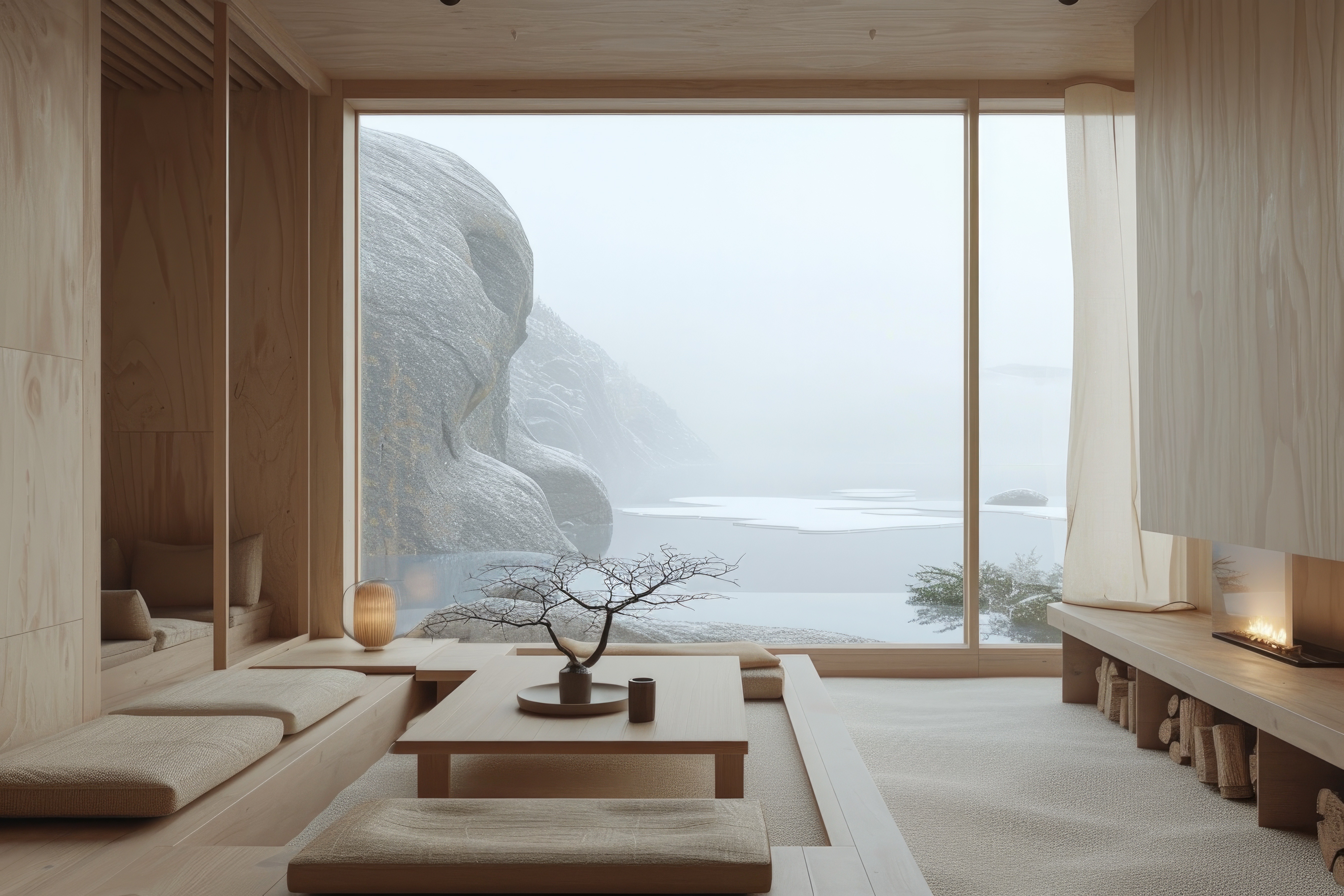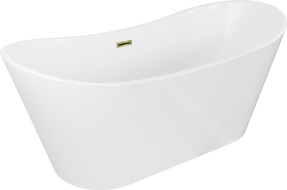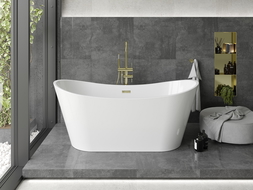
A bathroom in the japandi style is a space where everyday life turns into a calm ritual. An oasis of peace and a place captivating with simplicity, natural materials, and restraint. If you are someone who loves to surround yourself with elements of nature and dislikes opulence, you will surely appreciate the idea of arranging your interior in the japandi spirit. See how to arrange a bathroom so that it becomes a home refuge, full of light, balance, and elegance.
What you will learn from the article:
Arranging a bathroom in the japandi style is a process in which every detail matters – from the choice of materials, through the color scheme, to the accessories. To help you create a cohesive and harmonious space, we have prepared a set of practical tips:
What tiles to choose to make the japandi bathroom both bright, cozy, and timeless.
Which colors best reflect the japandi character and how to introduce stronger accents without disturbing harmony.
How to match a shower cabin to emphasize the style of the interior while being functional.
Why freestanding bathtubs are the perfect choice for japandi and how to arrange them in small and larger bathrooms.
What accessories – from lighting, through accessories, to plants – create an atmosphere of peace and closeness to nature.
What tiles to choose for a japandi-style bathroom?
A bathroom where simplicity meets elegance, and nature penetrates the interior, is a dream of many people inspired by Japanese culture. The japandi style combines Far Eastern attention to detail with the functionality and warmth of Scandinavian design. To achieve this effect in a small bathroom and create a harmonious combination of two interior styles, it is worth choosing bathroom tiles in subtle shades.
For small spaces, glazed tiles are recommended, which have a delicate gloss and interesting texture. They attract the eye but do not overwhelm the interior. To keep the overall look cohesive and light, opt for harmonious color combinations:
White with ivory – white broken with noble beige gives the effect of a natural mosaic. This subtle combination introduces brightness and optically enlarges the space while perfectly capturing the spirit of japandi, balancing between Scandinavian simplicity and Japanese elegance.
White with earthy tones – a white structure combined with earthy tones creates a nature-inspired atmosphere. Such neutral shades are begging for the company of wood and organic accessories.
Grey with navy – a bolder yet still subdued combination. The deep blue of the tiles pairs very well with the grey of the tiles, adding character to the interior.
In a small bathroom, it's worth maintaining moderation – it's best to choose one or two walls with mosaic, and finish the rest, for example, with waterproof paint in a neutral color. This way, the overall look will be light and easy on the eyes.
Timeless japandi color scheme – not just white and grey
Japandi is associated with minimalism, a subdued color scheme, and natural lighting, but that doesn't mean you have to do without stronger colors. On the contrary – in this style, you can allow yourself expressive colors that enliven the interior.
Which colors will help maintain a harmonious space and break the monotony?
Deep green – elegant tiles with an intense emerald hue reminding of forest colors and emphasizing closeness to nature, which is a priority in japandi aesthetics.
Wine red – this is a bolder accent, so such tiles should be used sparingly, for example, by the sink, to give the composition a decorative character.
Natural earth tones – warm, organic tones that harmonize with wood and natural accessories.
The basis of the arrangement is balance. The bathroom should be dominated by shades of white, beige, or grey, which optically enlarge the space. Expressive accents should only highlight the character of the interior, not overwhelm it.
.jpg)
Want to arrange a japandi-style bathroom? Don't forget about the shower cabin!
In a japandi bathroom, everything has its place and significance. It may seem to you that the shower cabin is solely a functional element of the equipment, so there is no need to focus on its design. This is a big mistake! The cabin is the focal point of the interior and should be chosen to emphasize the aesthetics of the entire arrangement.
The best choice will be cabins with simple lines, free of unnecessary ornaments. Models made from transparent glass, which optically enlarge the space and allow the full exposure of tiles or natural materials used in the arrangement, are perfectly suited. The fewer visible divisions, the better – japandi values harmony and open space.
Although the japandi style avoids opulence, it is not devoid of decorative nuances. A perfect example is details in the color of brushed copper – handles, cabin profiles, or structural elements. This type of finish beautifully warms the interior and pairs well with white, beige, and gray.
Bathtub in a japandi bathroom? Choose a model with a simple design
The japandi style relies on the balance between modernity and naturalness, and freestanding bathtubs fully embody this philosophy – their organic shapes, subtle finishes, and neutral colors emphasize the minimalism that is the core of this style. Wood, stone, and subdued colors in the bathtub’s surroundings create a composition that fosters relaxation and regeneration.
A significant advantage of a freestanding bathtub is the freedom of placement. You can showcase the bathtub in the center of the bathroom to play the leading role or position it closer to the wall, creating an intimate corner for relaxation. Bathtubs in shades of white, beige, or subtle greys perfectly complement the japandi color palette.
If you're wondering which taps to choose, be sure to check out our article: which taps are best for a freestanding bathtub?
What accessories will highlight the harmonious space of a japandi bathroom?
The japandi style is a philosophy of simplicity, functionality, and harmony. In the bathroom, this is manifested through natural materials, economical forms, and thoughtful accessories. It's worth investing in:
Rugs and mats made from bamboo, jute, or sisal – their textures introduce natural warmth.
Ceramic accessories – simple soap dishes, cups, or dispensers in neutral colors add cohesion.
Textiles made from linen or organic cotton – light, breathable, and pleasant to touch.
Delicate lighting – preferably diffused, in warm tones, which creates a relaxing atmosphere.
Plants in simple pots – greenery adds freshness and closes the gap between the interior and nature.
Elements made from wood – shelves, mirror frames, or stools made from raw wood add coziness.
With such carefully chosen accessories, a japandi-style bathroom becomes not only a beautiful but also a soothing place, where it is easy to unwind and relax.
Designing a japandi bathroom can be really exciting. With practical online tools, you can do it yourself. See how easy it is to design a bathroom without the services of an interior architect.





















